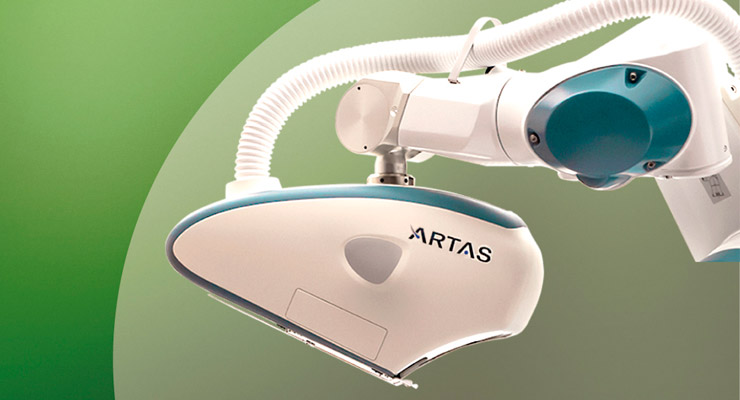Manual FUE Vs. Robotic
Robotic hair implant: In this article we will compare the two methods since many people consider that is better because it is automated and apparently more "technological", which is far from the truth, at least at this moment.
Why?
First of all, the Artas robot is only in charge of making the incisions in the scalp; the rest of the process, i.e. the extraction of follicles and subsequent implantation, is done manually and in no way differs from the traditional method. In addition, the robot uses too large a punch in order to preserve the integrity of the follicular units, starting with diameters of 1.0mm, whereas if performed manually by a physician with the appropriate equipment, diameters from 0.7mm upwards are generally used and usually never exceed 1.0mm, thus causing less damage to the scalp and allowing more units to be extracted per square centimeter.
On the other hand, the software is frequently blocked, which means that valuable time is lost and in a surgical procedure this can mean the death of tens or hundreds of follicular units. In addition, the cost of such a machine is around 200,000 dollars, money that the clinics must pass on to their patients, charging a high price for the procedure, much more than what a micro-implant with an experienced doctor is worth. In conclusion, it can be said that the robotic hair implant is an excellent marketing machine to attract customers who want to feel the technology so that they can feel it. results are not better than with the manual method.
FUE Manual
- Punch from 0.7mm
- Up to 3,000 follicular units transplanted per session (approximately 7,000 hairs).
- Manual implementation
- A large area can be covered
- Average cost
FUE Robotic
- Punch from 1.0mm
- Maximum 1,000 follicles transplanted per session (approximately 2,300 hairs).
- Manual implementation
- Less area available for transplanting
- High cost



